This article was co-authored by Katya Gudaeva. Katya Gudaeva is a Professional Makeup Artist and the Founder of Bridal Beauty Agency based in Seattle, Washington. She has worked in the beauty industry for over 10 years and worked with companies such as Patagonia, Tommy Bahama, and Barneys New York and with clients such as Amy Schumer, Macklemore, and Train.
This article has been viewed 93,184 times.
Choosing an eyeshadow shade that works for you can be a difficult process, especially if you’re not the type to wear eye makeup frequently. There are thousands of different colors in a multitude of hues and attempting to find just one that looks good on you can feel overwhelming. Fortunately, you can use your eye color, skin tone, and hair color as a basis to find the perfect shade to complete your look. No overthinking involved!
Steps
Choosing by Eye Color
-
1Try to go lighter for blue eyes. Using darker shades will distract from your eyes rather than enhance them. Neutral tones like coral, champagne, or a gray-brown will work best. [1] When applying eyeshadow try swiping a champagne hue over your lid and a complementary brown in your crease.
- Finish with a black eyeliner to really make your light eyes stand out.
-
2Try going smoky for gray eyes. Gray eyes are similar to hazel, but rather than containing browns, golds, and greens, they reflect blues, grays, and greens.[2] Using smoky shades like misty grays or silvery blues will help bring out the natural gray of the eye rather than change its color.
- Try using a darker eyeliner like black or a deep brown to draw more focus to the gray, too.
Advertisement -
3Try using muted colors for green eyes. Green eyes generally stand out on their own, so muted colors really help draw attention to their natural sparkle. Colors like a dusty purple/plum or brown will make green eyes appear more vivid.
- Try a pale pink on the lid and work upwards with a dusky purple on the crease. Blend the two into a gradient and finish with a plum eyeliner to help make the green pop.
-
4Experiment with metallics for hazel eyes. Similar to gray eyes, hazel eyes can change depending on what color eyeshadow you use. However, to keep the natural hazel color, shades of bronze, gold, or deeper pinks like a dusty rose work best.
- Try out a neutral beige on the lids and a green metallic on the crease to enhance the mixed hues without changing them.
-
5Try using contrasting colors for brown eyes. Almost anything works with brown eyes, but colors that are opposite on the color wheel like purple or teal will really help deepen the brown of the eye. However, colors like salmon, a coppery gold, or a reddish brown work as well.
- For light brown eyes, try sticking to more neutral tones like a light pink on your lid and a reddish brown in your crease.
EXPERT TIP"I love using a dark eggplant eyeshadow for light brown eyes, because it really makes the eyes pop."
Katya Gudaeva is a Professional Makeup Artist and the Founder of Bridal Beauty Agency based in Seattle, Washington. She has worked in the beauty industry for over 10 years and worked with companies such as Patagonia, Tommy Bahama, and Barneys New York and with clients such as Amy Schumer, Macklemore, and Train.
Katya Gudaeva
Professional Makeup Artist Katya Gudaeva
Katya Gudaeva
Professional Makeup Artist
Choosing by Skin Tone
-
1Figure out your skin tone. A simple way to determine skin tone is to look at your veins in natural lighting. If they appear blue or purple, you have a cool skin tone, which usually applies to those with fair or pale skin. However, if your veins appear green you have a warm skin tone and may have olive skin. If you can’t determine what color they are you may have a neutral skin tone and a darker complexion. However, keep in mind that those with darker skin can also have a cool or warm skin tone.
- If you are still uncertain of your skin tone, question whether you tan easily or burn when in the sun. If you tan easily, you likely have a warm skin tone. However, if you burn, you probably have a cool skin tone. [3]
- You can also decide based on whether you look best in silver or gold. Warm skin tones look best in gold, while cool skin tones look best in silver. Neutrals, on the other hand, look the same in both. [4]
- If none of these methods seem to work, or you can’t tell, you are likely in the neutral category.
-
2Try neutral colors for warm skin tones. You want to work with the undertones in your skin, which tend to be yellow or golden. Using colors like bronze, light pink, coral, or light green will help enhance your natural coloring.[5]
-
3Try silvery and blue colors for cool skin tones. The natural undertones for cool skin types are blues and pinks, so try colors like silver, teal, lilac, or gray to play up your features.[6]
-
4Experiment with everything for neutral skin tones. Those with neutral skin tones are fortunate enough to have no clear undertones, which means they can pull off almost any color. To work with natural coloring, however, try taupes or creams. [7]
-
5Avoid ashy or pallid colors for darker skin. These colors will fade and wear off throughout the day. Instead, go for richer colors like jewel tones (emerald, violet, ruby, sapphire), which will appear more muted on darker skin and last longer.[8]
-
6Stay away from grays and dark grays for fairer skin. These colors will not only wash out your skin, but they can also make you look bruised. To avoid this, go for softer pastels like lilac, rose, or baby blue. These colors will still stand out against your skin without being overbearing.
Choosing by Hair Color
-
1Figure out your hair color. Even if your hair is highlighted or colored, try to categorize it into one of the main shades: black, brown, blonde, red/auburn, or gray/white. This will make it easier when it comes to choosing an eyeshadow that works best for you.
-
2Try everything for black and brown hair. Similar to having brown eyes, all colors work with black/brown hair. However, bold colors like black, purple, yellow, green, or brown will really work in contrast to your hair color. On the other hand, if you have fair skin and dark hair, it’s best to stick to neutral colors like gold and beige, or other pastels, so your skin doesn’t look bruised.[9]
-
3Try neutral or natural colors for blonde hair. Those with blonde hair usually have fair or pale skin, so dark eyeshadow colors can be overpowering. Sticking to colors like gray, pink, black, blue, gold, or cream will enhance natural coloring without making you look bruised or tired. [10]
-
4Try strong, semi-muted colors for red or auburn hair. Since red or auburn hair is already bold in coloring, shades like black, pink, gold, olive, or copper will help the hair to stand out more without distracting from it. Shiny or shimmery colors may pull the focus away from the brightness of the hair.
-
5Try pastels for gray or white hair. The lighter coloring will help complement the fairness of the hair color rather than detract from it. Colors like gray, lilac, or blue will help pull out the natural highlights in the hair.
-
6Try different colors for brightly colored hair. Anything goes for “unnatural” hair colors like purple, pink, or green, however choosing opposite colors on the color wheel can help make your hair color pop even more.
- For example, if you have green hair try pinks and purples to make it pop. Or if your hair is pink, try a lime green or chartreuse.
- For multicolored hair, try focusing on the colors that frame your face. For example, if you have blue bangs, a gold or dusky orange would look good.
Community Q&A
-
QuestionWhich eyeshadow for should I use with a Ferozi dress?
 Community AnswerTry using the Naked 3 Urban Decay palette. All of the shades look very natural and elegant.
Community AnswerTry using the Naked 3 Urban Decay palette. All of the shades look very natural and elegant. -
QuestionWhat color eye shadow should I use if my dress is dark blue and pink?
 Community AnswerTry using browns, bronzes, or even pale pink. This will let the dress stand out even more and accentuate your natural beauty.
Community AnswerTry using browns, bronzes, or even pale pink. This will let the dress stand out even more and accentuate your natural beauty. -
QuestionI have deep chestnut hair, warm olive skin, and warm dark brown eyes. What eyeshadow colors should I wear?
 Community AnswerWarm metallics like gold and bronze and deep browns would look great on you. You could also play with more vibrant warm tones like oranges and pinks if that is your style.
Community AnswerWarm metallics like gold and bronze and deep browns would look great on you. You could also play with more vibrant warm tones like oranges and pinks if that is your style.
References
- ↑ http://www.elle.com/beauty/advice/g26440/best-eyeshadow-for-eye-colors/?slide=1
- ↑ http://www.huffingtonpost.com/entry/best-makeup-for-grey-eyes_us_55b65458e4b0a13f9d191f33
- ↑ http://www.paulaschoice.com/expert-advice/face/_/how-to-determine-your-skin-tone-and-undertone
- ↑ http://www.paulaschoice.com/expert-advice/face/_/how-to-determine-your-skin-tone-and-undertone
- ↑ http://makeupandbeauty.com/eyeshadow-color/
- ↑ http://www.makeup.com/whats-your-skin-tone
- ↑ http://www.makeup.com/whats-your-skin-tone
- ↑ https://www.herbsofgrace.com/tips-and-advice/natural-beauty/choosing-the-perfect-eye-shadow-for-you
- ↑ http://makeupandbeauty.com/eyeshadow-color/
About This Article
To choose eyeshadow, opt for light colors such as coral or champagne if you have blue eyes, as this will highlight your eye color. You can also add a black eyeliner so your light eyes stand out. Alternatively, showcase your grey eyes with smokey eyeshadow, such as silvery blue. For green eyes, choose muted colors like purple or brown to make the green vivid. If your eyes are brown, try a contrasting teal or purple eyeshadow to deepen the color. For tips on how to choose eyeshadow based on your skin tone or hair color, read on!
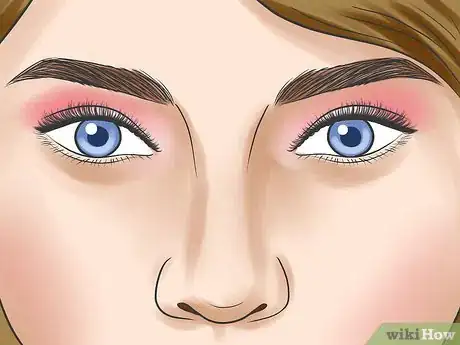
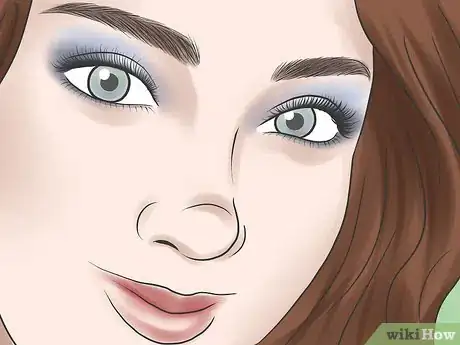

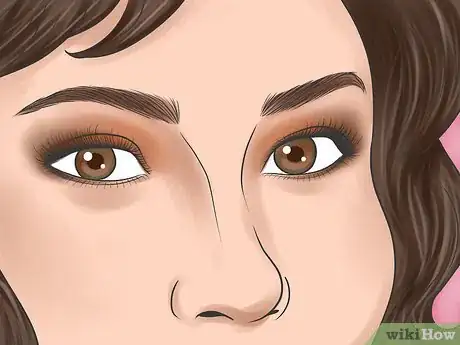
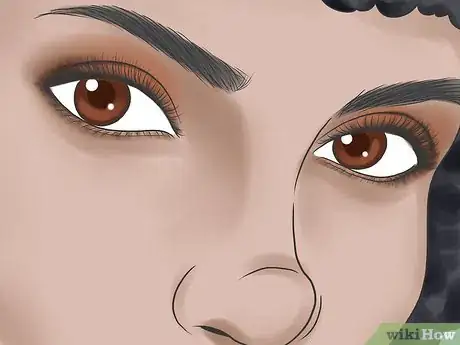

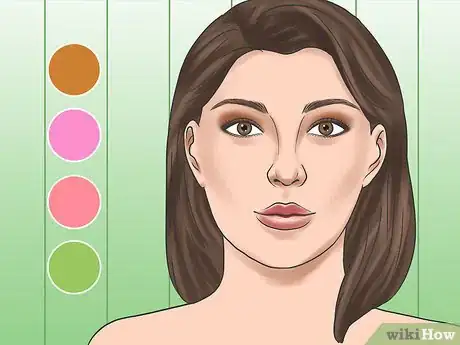
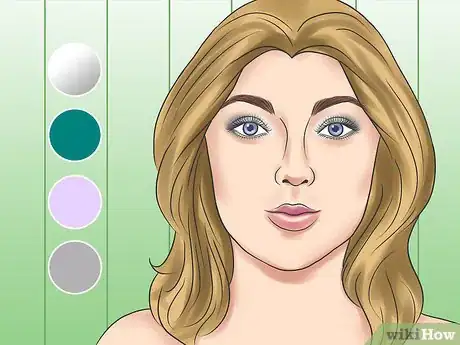
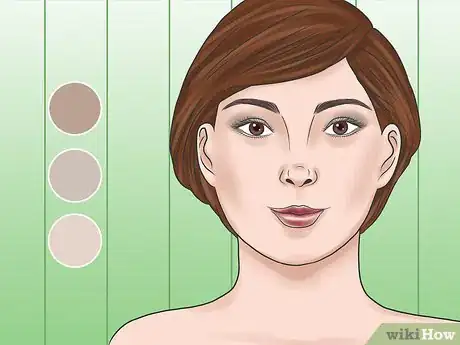

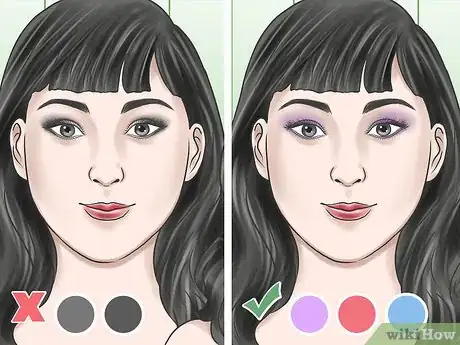
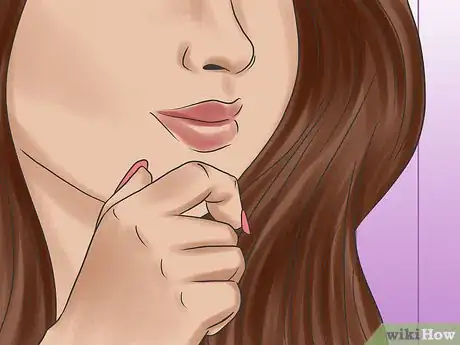
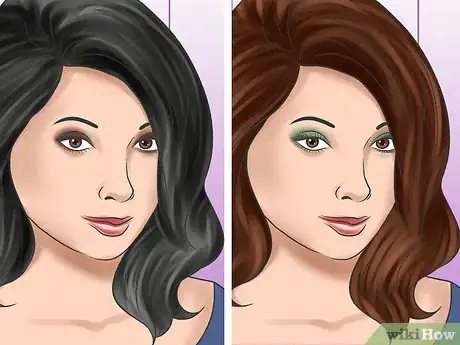



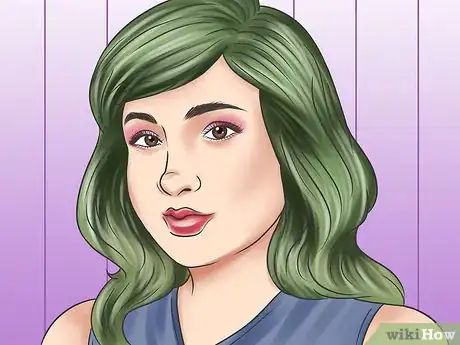
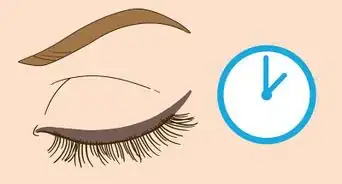

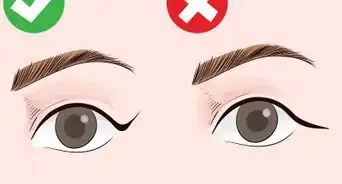








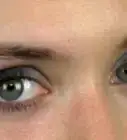
-Step-20.webp)




































